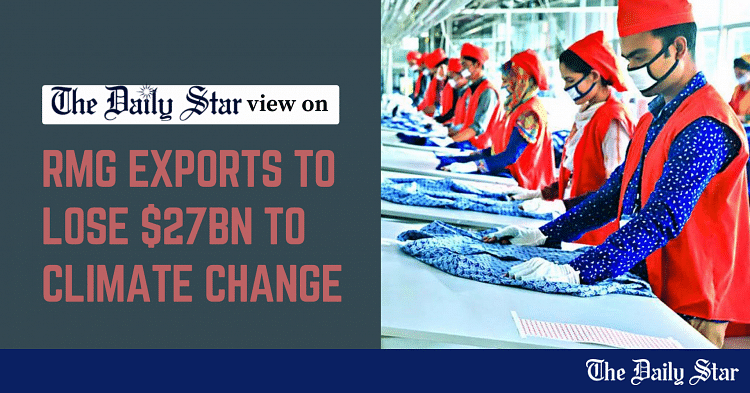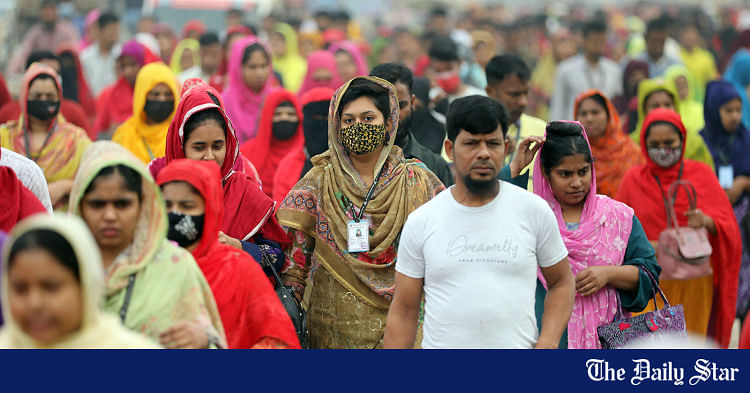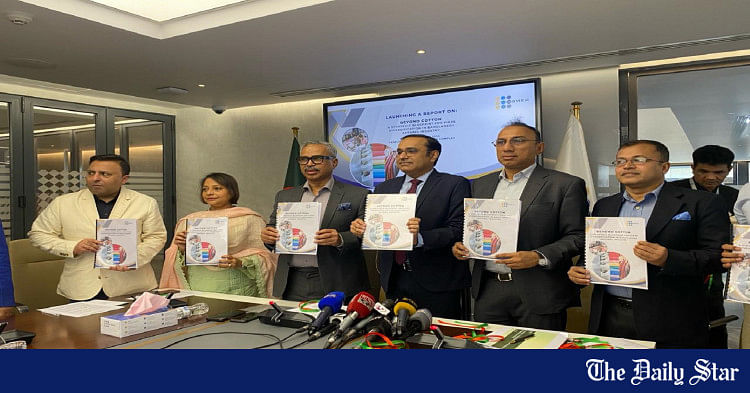Saif
Senior Member
- Joined
- Jan 24, 2024
- Messages
- 15,397
- Reaction score
- 7,874
- Nation

- Residence

- Axis Group


Growing demand in denim item has created new opportunity
Breaking News, International News & Multimedia
thedailynewnation.com
Growing demand in denim item has created new opportunity
1 Mar 2024, 12:00 am

Staff Reporter :
Increase in consumption of denim items internationally has created a new opportunity for Bangladesh and the local entrepreneurs are desperate to grab a share of the growing market.
The local exporters are now competing with China, Pakistan, Vietnam, Turkey and Mexico as the size of the global denim is expected to stand at over $76 billion by 2026.
The entrepreneurs are showing interest in producing the items as most of the fabrics used in the denim sector are being manufactured in the country, which is popular in various countries like the USA and Europe.
The share of Bangladeshi denim in the US market is over 22 per cent and 27 per cent in the EU market. Denim shipment to the US and EU has increased by 42 per cent and 15 per cent respectively in just one year.
Following this, local entrepreneurs have invested nearly Tk 25,000 crore in the denim segment of the primary textile sector, which already has 42 modern mills capable of supplying over 900 million metres of denim fabrics each year, according to data of the Bangladesh Textile Mills Association (BTMA).
Syed M Tanvir, Managing Director of the Chattogram-based Pacific Jeans Ltd, told The New Nation, “We want to increase denim production by more than 12 per cent this year compared to 2023. The outlook for denim in 2024 is better than last year, so the export of denim items is expected to grow this year.”
Reaching to the current state of the sector, the entrepreneurs had to struggle hard as there was no washing plant in the country till 1984. Later, late Nasir Uddin, founder of the Pacific Jeans Ltd, set up a washing plant in Chittagong Export Processing Zone (CEPZ) taking technical support of Italian buyers during the time.
As the entire work of fabric production, sewing and washing is being completed locally, lead time denim export has reduced significantly, the manufacturers said.
They further said demand for denim has been rising worldwide because of changes in fashion as the denim is more flexible and comfortable.
The Bangladesh Garment Manufacturers and Exporters Association (BGMEA) has set a target of apparel export worth $100 billion in 2030 and denim can play an important role in this regard.
Monsoor Ahmed, Chief Executive Officer of the BTMA, said that fresh investment and reinvestment in the sector was continuing as Bangladesh had already proven itself as a reliable source for denim fabrics.
Despite the fact that most mills were established over the past 10 years, they have had to increase their capacity due to demand from international clothing retailers and brands, he said.

Staff Reporter :
Increase in consumption of denim items internationally has created a new opportunity for Bangladesh and the local entrepreneurs are desperate to grab a share of the growing market.
The local exporters are now competing with China, Pakistan, Vietnam, Turkey and Mexico as the size of the global denim is expected to stand at over $76 billion by 2026.
The entrepreneurs are showing interest in producing the items as most of the fabrics used in the denim sector are being manufactured in the country, which is popular in various countries like the USA and Europe.
The share of Bangladeshi denim in the US market is over 22 per cent and 27 per cent in the EU market. Denim shipment to the US and EU has increased by 42 per cent and 15 per cent respectively in just one year.
Following this, local entrepreneurs have invested nearly Tk 25,000 crore in the denim segment of the primary textile sector, which already has 42 modern mills capable of supplying over 900 million metres of denim fabrics each year, according to data of the Bangladesh Textile Mills Association (BTMA).
Syed M Tanvir, Managing Director of the Chattogram-based Pacific Jeans Ltd, told The New Nation, “We want to increase denim production by more than 12 per cent this year compared to 2023. The outlook for denim in 2024 is better than last year, so the export of denim items is expected to grow this year.”
Reaching to the current state of the sector, the entrepreneurs had to struggle hard as there was no washing plant in the country till 1984. Later, late Nasir Uddin, founder of the Pacific Jeans Ltd, set up a washing plant in Chittagong Export Processing Zone (CEPZ) taking technical support of Italian buyers during the time.
As the entire work of fabric production, sewing and washing is being completed locally, lead time denim export has reduced significantly, the manufacturers said.
They further said demand for denim has been rising worldwide because of changes in fashion as the denim is more flexible and comfortable.
The Bangladesh Garment Manufacturers and Exporters Association (BGMEA) has set a target of apparel export worth $100 billion in 2030 and denim can play an important role in this regard.
Monsoor Ahmed, Chief Executive Officer of the BTMA, said that fresh investment and reinvestment in the sector was continuing as Bangladesh had already proven itself as a reliable source for denim fabrics.
Despite the fact that most mills were established over the past 10 years, they have had to increase their capacity due to demand from international clothing retailers and brands, he said.




